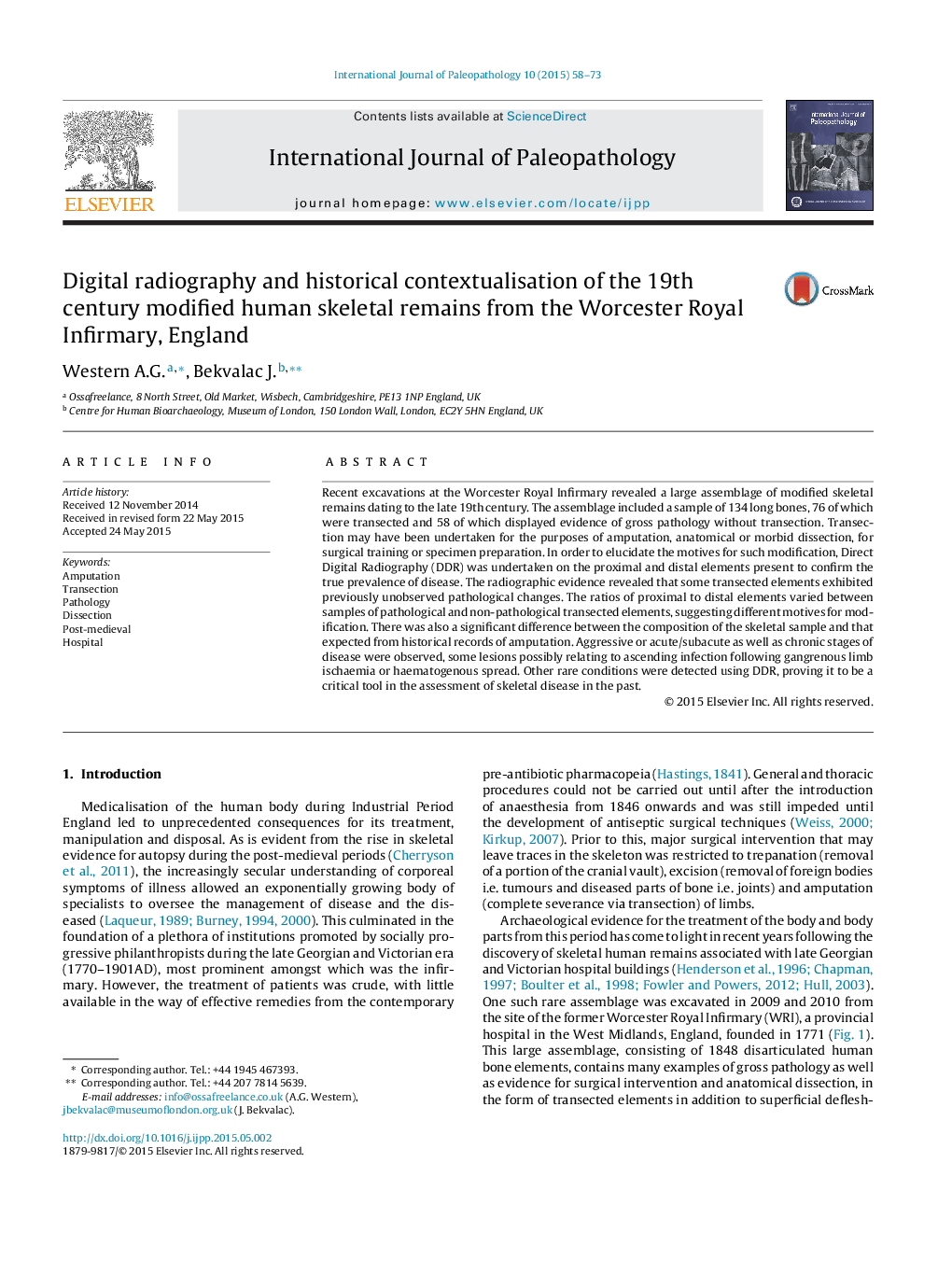| Article ID | Journal | Published Year | Pages | File Type |
|---|---|---|---|---|
| 101319 | International Journal of Paleopathology | 2015 | 16 Pages |
Recent excavations at the Worcester Royal Infirmary revealed a large assemblage of modified skeletal remains dating to the late 19th century. The assemblage included a sample of 134 long bones, 76 of which were transected and 58 of which displayed evidence of gross pathology without transection. Transection may have been undertaken for the purposes of amputation, anatomical or morbid dissection, for surgical training or specimen preparation. In order to elucidate the motives for such modification, Direct Digital Radiography (DDR) was undertaken on the proximal and distal elements present to confirm the true prevalence of disease. The radiographic evidence revealed that some transected elements exhibited previously unobserved pathological changes. The ratios of proximal to distal elements varied between samples of pathological and non-pathological transected elements, suggesting different motives for modification. There was also a significant difference between the composition of the skeletal sample and that expected from historical records of amputation. Aggressive or acute/subacute as well as chronic stages of disease were observed, some lesions possibly relating to ascending infection following gangrenous limb ischaemia or haematogenous spread. Other rare conditions were detected using DDR, proving it to be a critical tool in the assessment of skeletal disease in the past.
